Shortly after, Alan began his Euro Book Trek to promote Salt & Seeds while exploring the myriad adaptations already taking root across Europe. This article is adapted from posts on his Substack, chronicling the adventure.
Leg 1: Cambridge & Ely – Lowlands, Legacy & Literary Soil
The Euro Book Trek began not with a bang, but with the soft, persistent lapping of water under a fenland sky and a punt ride down the river past ancient libraries. As I stood beneath the tower of Ely Cathedral, it struck me: if Salt & Seeds is a story of regeneration and resistance, then this land, once an island in marsh and sea, was the perfect place to start. Cambridgeshire and Ely exist on borrowed time, much like my home in East Yorkshire — and the world Vega inherits in my novel.
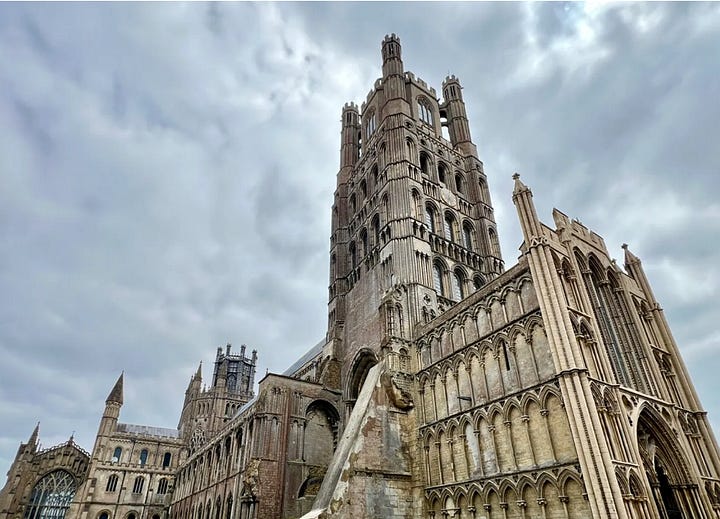
Ely, a cathedral city built on high ground in a sea of low-lying fens, was originally an island dominated by a 7th-century monastery, reminiscent of Whitby Abbey — also 7th century. Henry VIII closed both, but Ely was quickly re-established as a cathedral, while Whitby was left to erode. Walking Ely’s sacred spaces gave me a vivid sense of what Whitby Abbey once was in its full glory.
Meanwhile, Cambridge, an ancient seat of learning, imagination, and quiet rebellion, is home to around 100 libraries — stories stacked on stories, bricks bound to books.
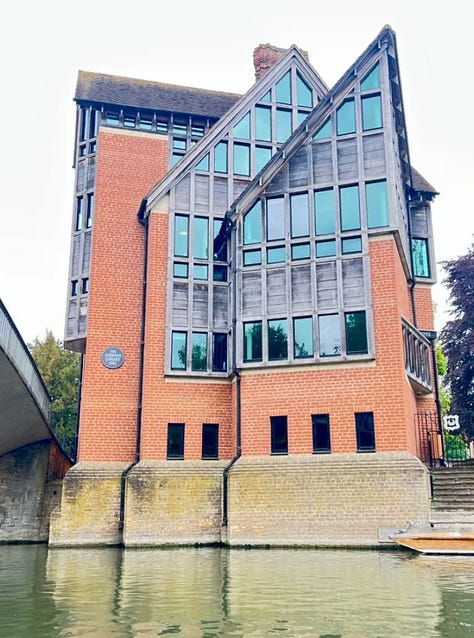
Both Ely and Cambridge sit just above sea level — their pasts reclaimed from water, their futures once again threatened by it. The Fens, long drained by pumps and protected by levees, now face rising tides and an uncertain infrastructure. Yet there’s hope: locals are planting flood-tolerant trees and exploring peatland restoration. Here, as in Salt & Seeds, the waterways are not only risks — they are also lifelines that the people here know how to use.
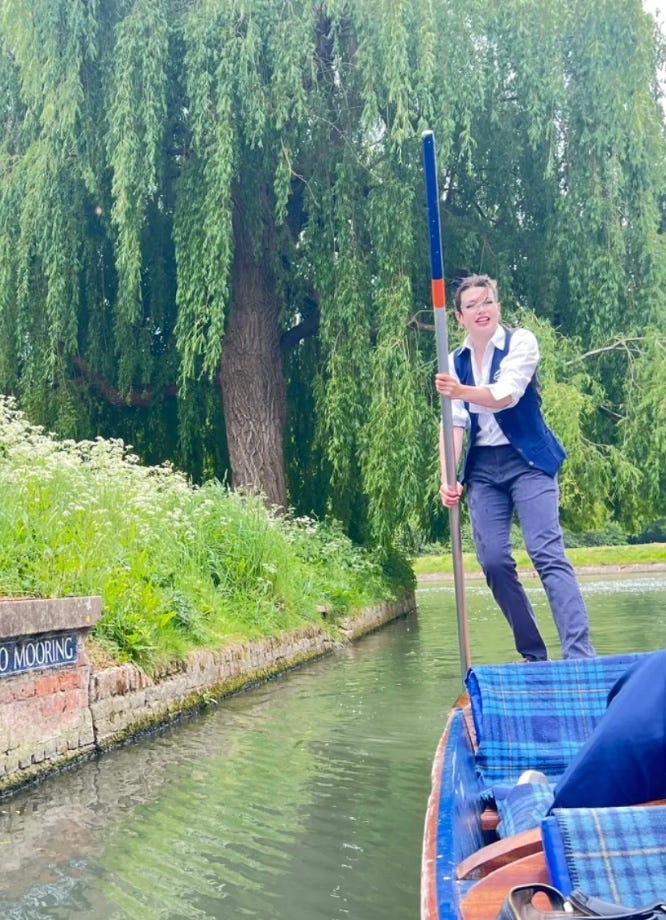
In Ely, Peacocks Tearoom offered a gentle pause, where bookmarks now wait for readers sipping lapsang and enjoying lemon drizzle cake. Their tea selection was the best I’ve ever seen — the violet tea paired beautifully with my peanut butter and banana sandwiches. George, the owner, is a wonderful host. Over tea, he told me he’s friends with the owner of Toppings Books and kindly offered to speak with them about stocking Salt & Seeds in their shops.
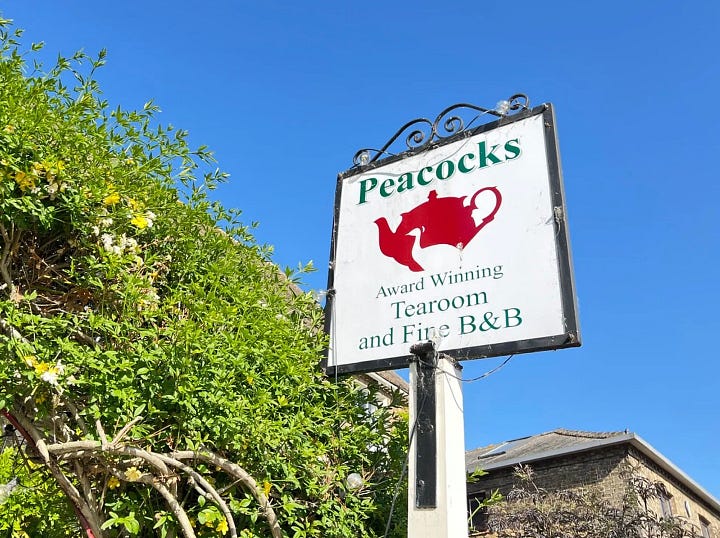
At Topping & Co., the warm, welcoming staff stacked books high, proudly displaying local authors. Bookmarks are now stashed among the shelves.
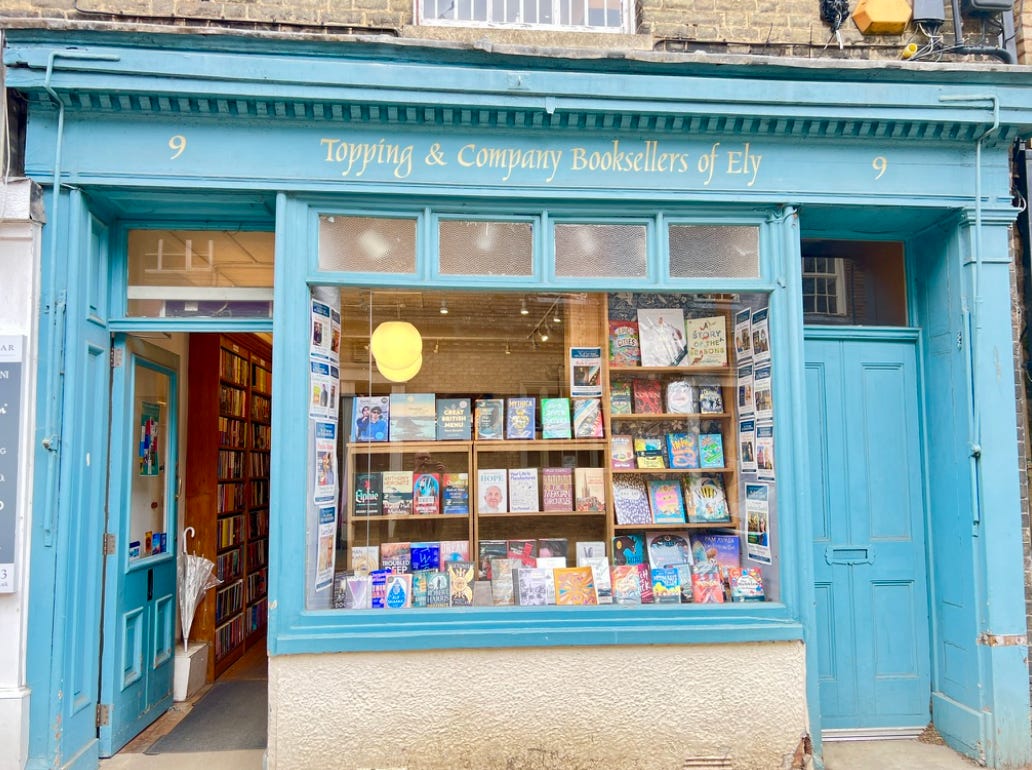
In Cambridge, I visited Thrive, a conscious, plant-powered book café where solarpunk flyers sit next to flapjacks. I had a fabulous breakfast, leafed through a rich collection of books, and left bookmarks nestled throughout.
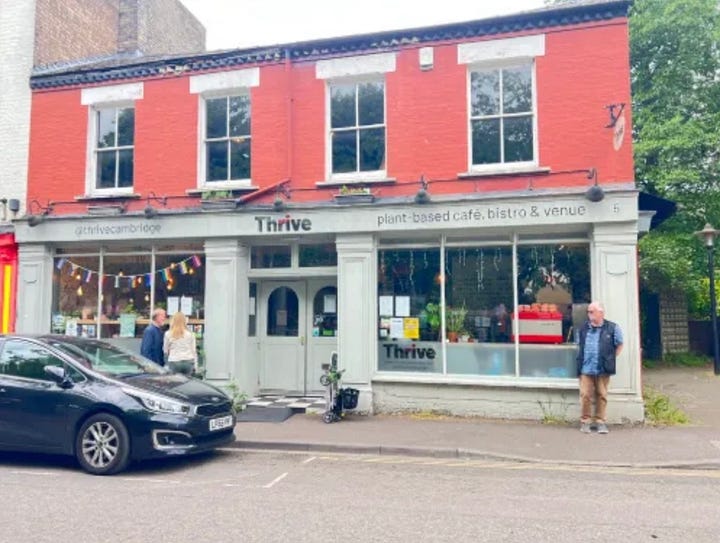
At The Haunted Bookshop, I navigated narrow aisles with whispering books — the perfect haunt for a quiet offering.
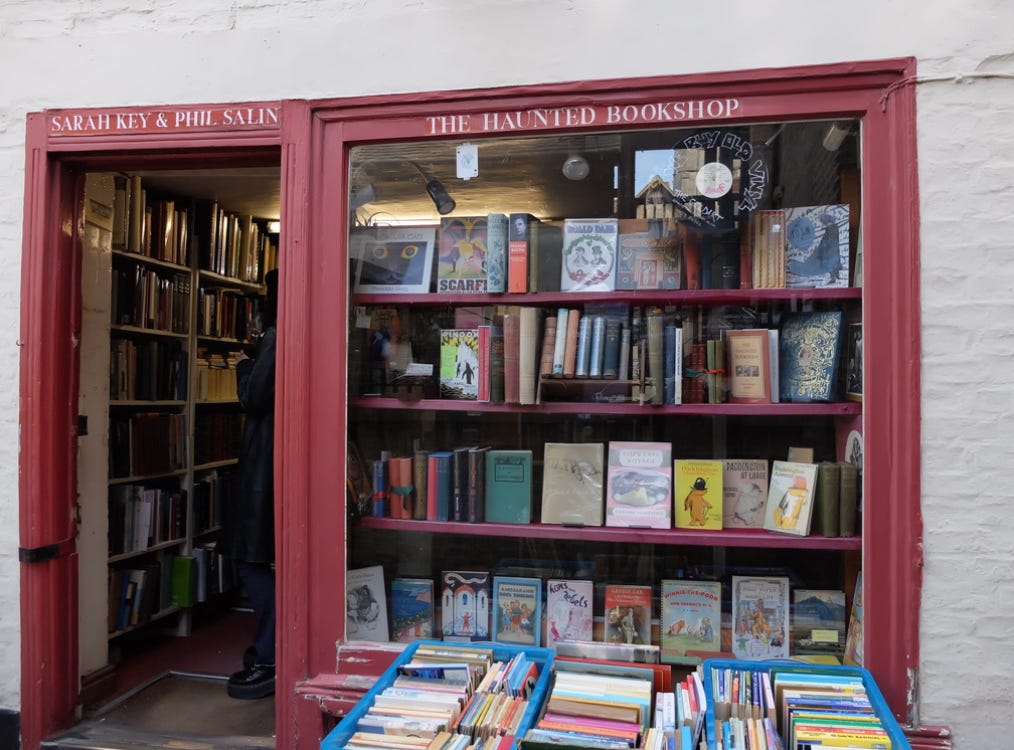
At Great St Mary’s Church Book Swap, one signed copy now sits beneath the bells, waiting for a wandering soul.
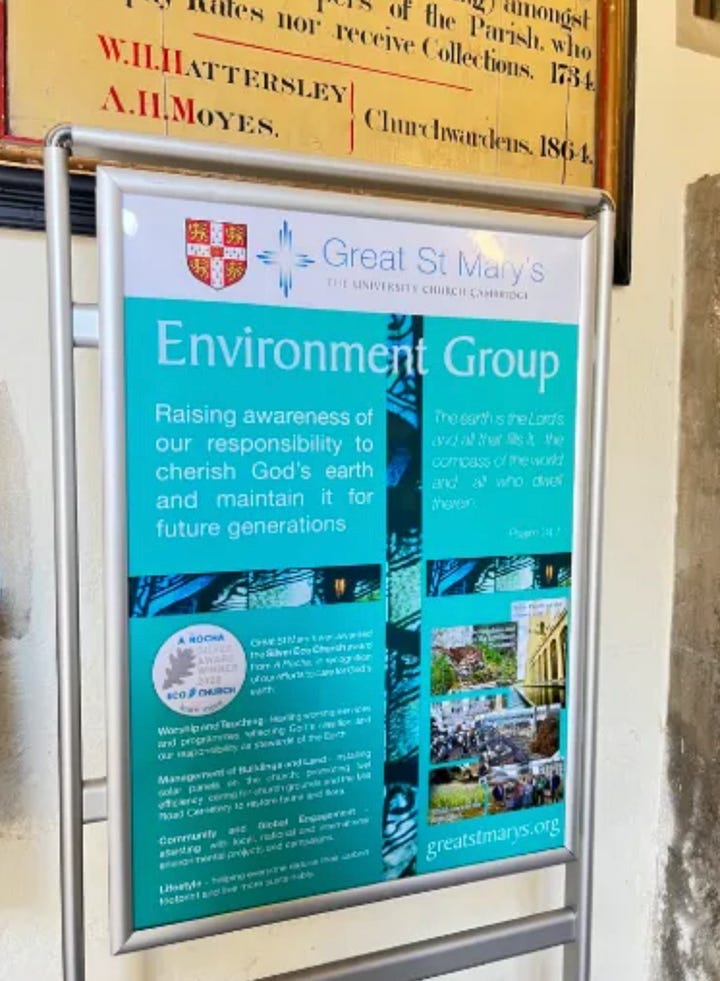
I even visited Waterstones & Heffers. Yes, chains — but both staffed by passionate readers who received Salt & Seeds with genuine interest.
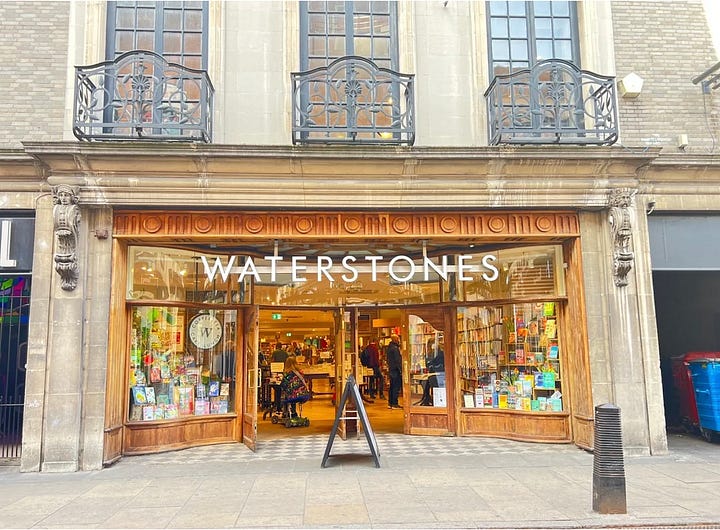
A woman in the Haunted Bookshop asked me what my book was about. “Hope,” I said. “And community resilience.” She smiled like she already knew. At Thrive, a kind woman behind the counter with fabulous tattoos read the back cover and said, “I look forward to reading this myself.” These moments stay with me — the spark of recognition, of shared purpose.
This beginning was all about planting seeds and reconnecting with literary roots — in the marshy soil, in conversations over tea, in ancient stone and ink-stained hands. These are the stories we carry and leave behind.
Leg 2: Normandy To Toulouse – Memory, Resistance & Storytelling by Sea and Stone
After crossing beneath the Channel via Le Shuttle — a slightly unnerving experience for a claustrophobe — I emerged into France and rolled south along the coast to Boulogne-sur-Mer. A windswept town with echoes of ancient tides and wartime crossings, it was here that the second chapter of the Euro Book Trek truly opened.
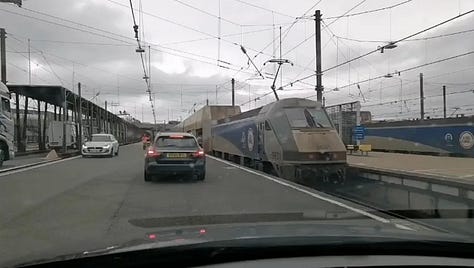
Boulogne-sur-Mer is France’s oldest fishing port and once the Roman capital of Gaul. Beneath its ramparts, I found a quiet book swap nestled in a side street, and placed a signed copy of Salt & Seeds there for a stranger to find. A town shaped by tides and trade, like so many of the communities my book speaks to.
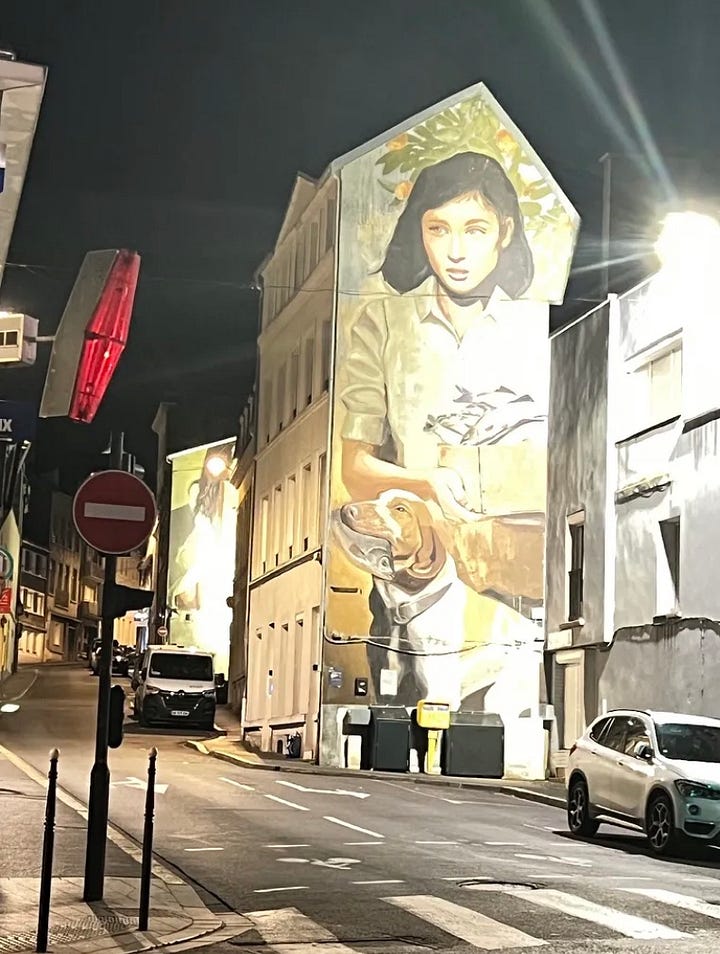
My visit to Juno Beach, Courseulles-sur-Mer, was deeply personal. My son’s great-grandfather came ashore here in 1944 with the Canadian army, part of the D-Day landings. To walk that same beach is an extraordinary thing — sobering, humbling, connective. Still framed in remnants of war.
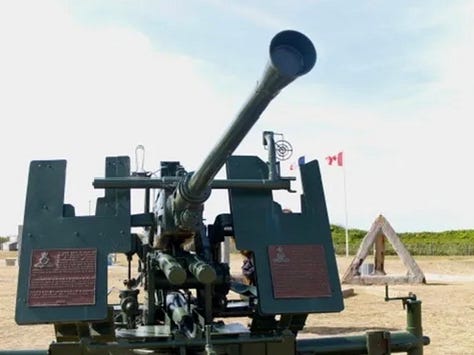
Next, I came to the War Cemetery, near Onahama Beach. The resting place of those who never made it past that first terrible day. White crosses in perfect lines. I couldn’t help thinking of the generational echoes — what they preserved, and what we must protect, as war and fascism rise again in Europe.
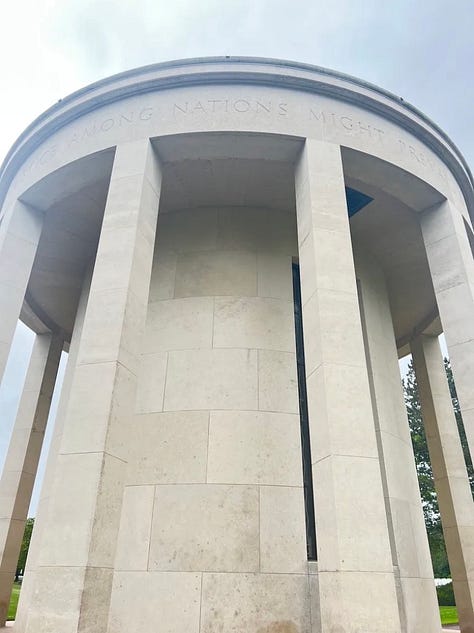
Painted bright red and filled with paperbacks, I came across a book swap in an English phone box, near Juno Beach. I placed a signed copy of Salt & Seeds inside, for the many English readers around these parts.
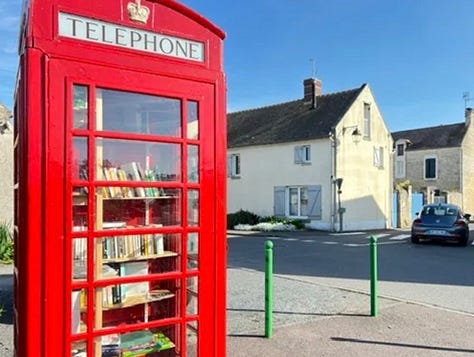
As I continued inland, I came to Caen, a city scarred by WWII, but now thoughtfully rebuilt. The Caen Memorial Museum is a powerful archive of 20th-century conflict — but also peace-building. This stop gave me a chance to reflect on memory as civic duty, and the role of narrative in resisting authoritarian forgetting. Caen has real concerns about climate change and is taking preparations seriously.
In Tours, a beautiful riverside city and a way-marker south, history feels deeply woven into the streets. It is known for its Renaissance architecture and commitment to heritage preservation. I didn’t stop long — but long enough to admire how this place balances old and new, tradition and transition.
I met a young man who had recently left the French army. He told me, quietly, that he felt dreadfully lonely and unsure of his next step. His friends had all stayed on or moved elsewhere. I told him he might find solace in writing — in creating characters, telling stories, giving voice to what aches. I hope he will be okay.
A ghost village, preserved in silence, Oradour-sur-Glane stood out among my destinations. In 1944, German SS troops massacred 643 inhabitants — mostly women and children — and left the ruins as they were. Visiting here is not like walking through history. It is walking through trauma. Burned prams. Rusting cars. Church walls blackened by fire and pitted with bullet holes where people prayed for sanctuary before the end. I left no book here — only silence and a promise to remember.
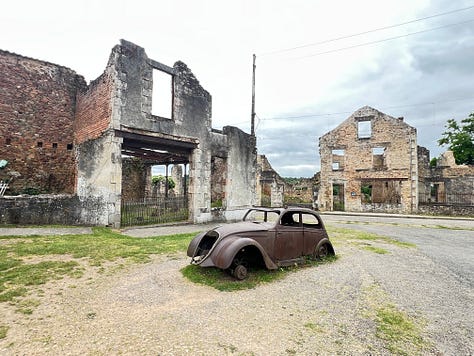
Finally, I arrived in Limoges, a small city near Oradour’s shadow. Here, I found Le Bibliovore, a warm, independent bookshop where I left bookmarks and had a thoughtful chat with the bookseller about climate fiction, art, and resilience. He seemed to understand exactly what I was doing.
A woman asked if Salt & Seeds was a sad book. I said, “It’s honest. But it ends with growth.” She nodded. “Then it is a hopeful one.”
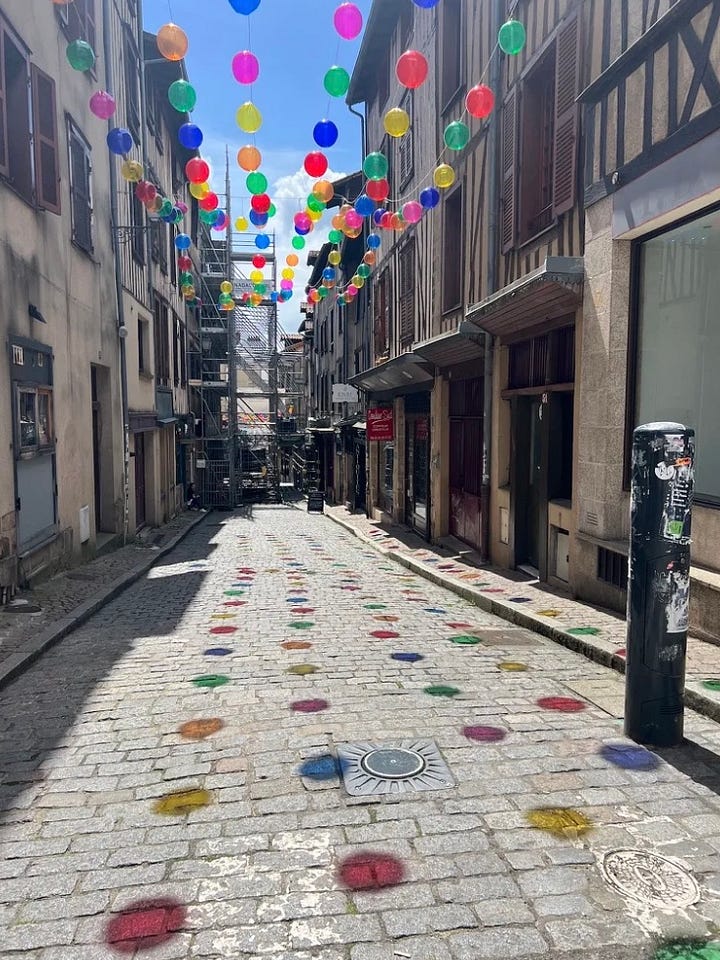
Normandy’s coastlines are under increasing threat from erosion and rising sea levels. The same beaches that bore guns and sacrifice now face subtler, slower battles. Local initiatives are emerging: dune restoration, floodplain buffering, and heritage-sensitive urban planning. This is the slow fight — not against invasion, but inundation. Historic bunkers and precious land are being lost to increasing, storm-driven tides. Building plans have recently been shelved due to worries of faster sea level rise than anticipated.
As I moved inland, the danger shifted — not from water, but from heat and fire. The Nouvelle-Aquitaine region, including Limoges, is seeing hotter, drier summers and renewed investment in forest fire management. Community allotments, sustainable transport initiatives, and climate adaptation plans are all growing — just like the themes at the heart of Salt & Seeds.
This leg of the journey was a descent — from the cliffs of Normandy into the shadowed ruins of Oradour, and on to the flowering south. Each place reminded me that resistance isn’t only about defiance — it’s also about remembrance. It’s about how we carry pain, and how we plant something in its place.
Leg 3: Toulouse To Lourdes & Bielsa – Stars, Sacred Sites & A Road Between Worlds
Some chapters unfold like stories. Others feel like visions. This leg of the Euro Book Trek was a bit of both.
From the vibrant streets of Toulouse to the mountain shadows of Bielsa, this stretch was soaked in the surreal, the sacred, and the speculative. Along with my wife Sara and my son Harrison, I went to stay with my old friend Chris Rosings, former editor of OVNIS — the popular French UFO magazine that once featured my son and I years ago. Chris is one of the most curious, sharp-minded people I know — and she was keen to show us the sights of her home town and surrounding area. This journey was, in many ways, an opportunity for Chris and Harry to continue the conversation they started when he was only 14, about the many unexplained mysteries of Europe

Toulouse is a beautiful, warm city of art, fashion, and science — ancient streets humming with creative enterprises. While Chris showed Sara and Harrison around town, I visited Cité de l’Espace, a huge space-themed discovery park. Toulouse is known as the European Capital of Space, home to Airbus — and a very big rocket.
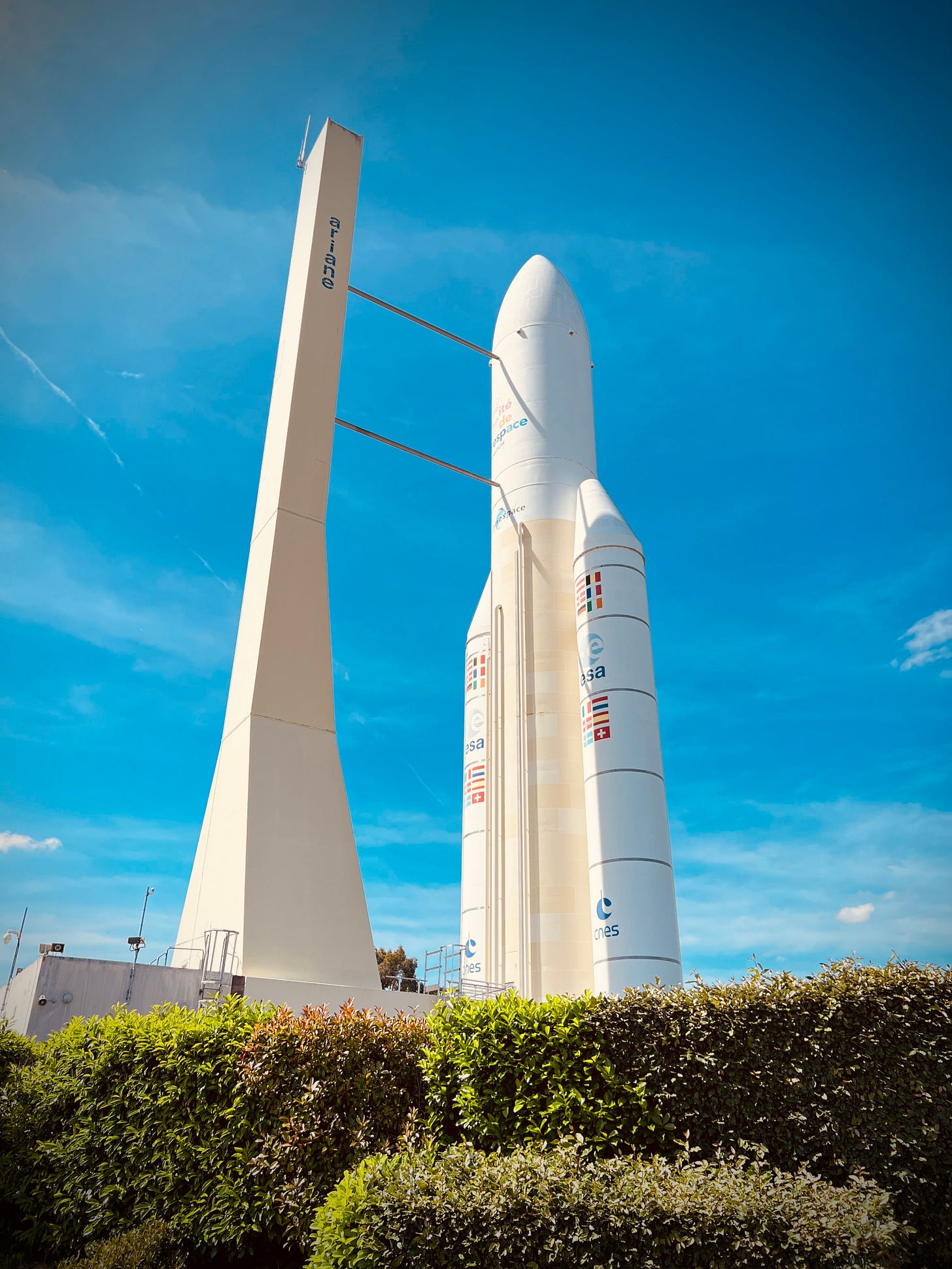
Here, inspiration for sci-fi writing was everywhere. Earth observation, planetary resilience, and space-enabled conservation projects all echoed my character Rowan’s work in Salt & Seeds — mapping the climate-battered terrain of a future Earth from above. The VEGA rocket model was also on display, and I couldn’t help thinking that my character Vega would’ve loved seeing it. I felt proud to still be working in the space sector on Earth preservation initiatives, and treated myself to a new ESA patch.
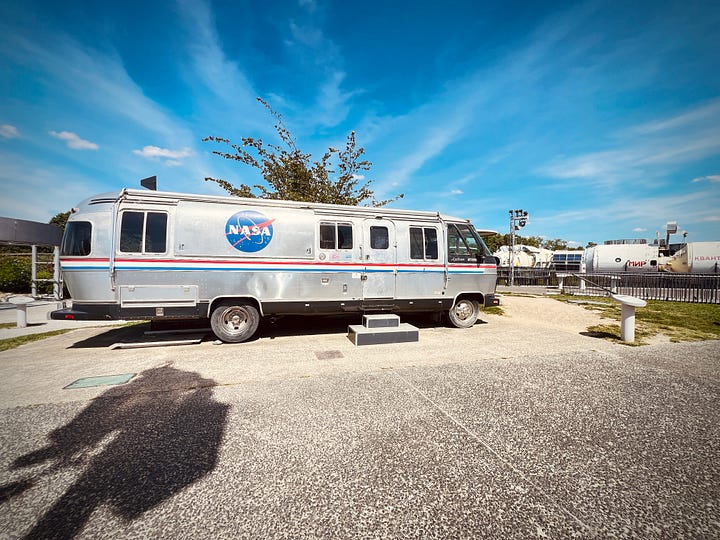
Toulouse turned out to be more than a stop — it became a creative ignition point. Chris offered to translate Salt & Seeds into Spanish, and introduced me to a friend interested in creating a graphic novel adaptation. The story is growing — not just in space, but in form.
This city makes you think forward. After so many reflections on memory and war in Normandy, Toulouse felt like standing on a launchpad — not just for rockets, but for imagination.
Later that day, I joined Chris and my family in the city centre for excellent food and a tour of the wonderful bookshops and galleries. Salt & Seeds found kindred company in Toulouse — stories about possible futures, wild hope, and strange new worlds were welcomed with warmth and enthusiasm. A great example is The Bookshop — with a well-curated stock of English language books, and now a signed copy of Salt & Seeds on its shelf.
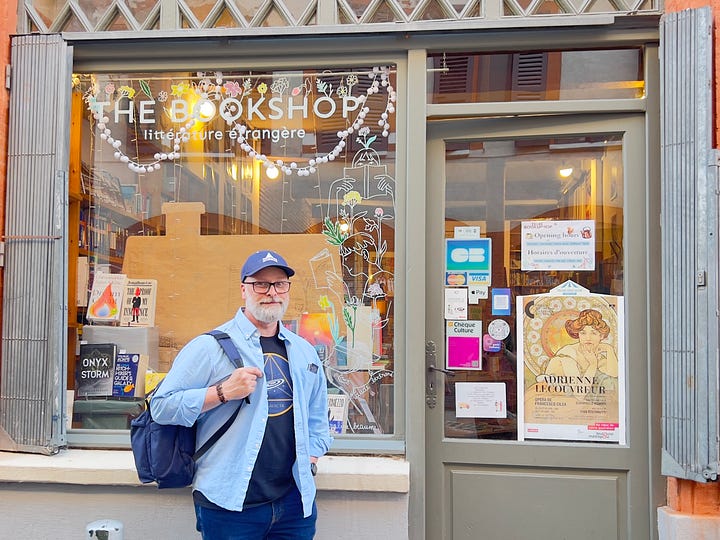
Next we came to Lourdes, a place of devotion, healing, and deep mystery. We stopped here with Chris on our way to the mountains. We drank from the holy spring, visited the grotto, and watched monks, nuns, and other pilgrims move like quiet currents through the sanctuaries.
Lourdes is not just about miracles — it’s also about resilience through ritual. The town has a complex relationship with flooding, having faced several devastating deluges in recent years. And yet, it rebuilds again and again, with faith and sandbags. There’s valuable experience here.
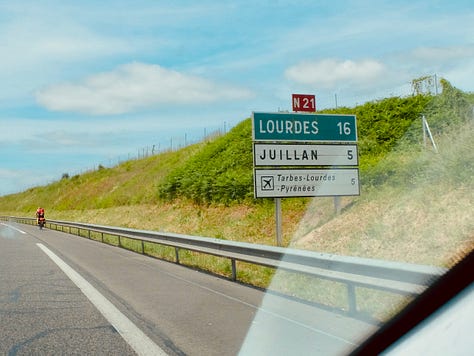
We then crossed into Spain through the Tunnel de Bielsa, emerging into sweeping Pyrenean wilderness. The magnificent snow-capped peaks contrasted with the warm sunlit ground in the beautiful clearing where we stopped to stretch our legs. Local cows, big-belled and friendly, grazed calmly nearby with their calves — curious, not protective.

That night we had a delicious meal in Bielsa, where I left bookmarks before driving back through winding mountain roads. A beautiful deer ran beside our car for several long moments, as if guiding us back to the border. The road was winding and long. It felt like moving through a dream. Like the forest itself was aware of us.
As I reflected on this leg, I thought of the unique ways that climate resilience manifests in different places.
Toulouse isn’t just a city of aerospace — it’s a city thinking about survival. Its research centres study not only satellites and rocketry, but also urban sustainability, water systems, and climate resilience. ESA’s Earth observation programs are already being used to monitor deforestation, ocean temperatures, and agricultural shifts — the very technologies I work with in GalacticESG, and the inspiration for what my character Rowan uses in Salt & Seeds to interpret planetary signals from orbit.
In contrast, Lourdes faces rising climate pressure with very human tools — cooperation, community, ritual. The 2013 and 2018 floods shut down pilgrimage sites and displaced residents. Now, improved flood defences and real-time monitoring protect the sacred grotto. It’s a blend of ancient belief and modern adaptation — in the face of warming air and heavier storms.
In the Pyrenees, climate change brings a different pressure: earlier snowmelt, shifting ecosystems, and wildlife migrating higher. Sacred or not, the mountains are changing too.
This leg reminded me that speculative fiction doesn’t always begin in the mind — sometimes it begins in the body, in landscape, in stories whispered in chapels or tracked in satellite orbits. It was a journey through outer space and inner signal, through pilgrimage and possibility.
Leg 4: Provence To Nice – Rural Beauty, Tear Gas & Emergency Injections by the Sea
This stretch of the journey began like a painting — ochre villages, quiet roads, the scent of lavender and pine — and ended like a scene from a novel I hadn’t planned to write. After the sacred quiet of Lourdes and the wilderness of Bielsa, we entered Provence, followed the sun east, and arrived in Nice — where unexpected moments shaped the memory of everything that came before.
The first stop was in Gordes, a luminous hilltop village of limestone, shadows, and slow afternoons. I left bookmarks in a book swap, tucked away in a wine-bar backroom, with a cliffside view to die for.
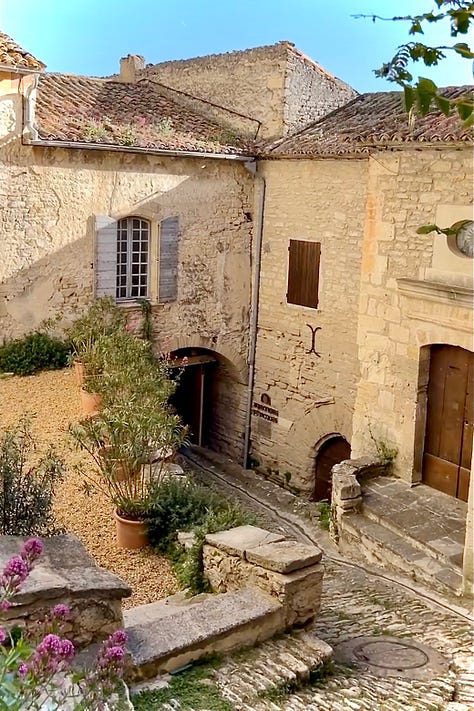
Next was Roussillon, a village cut from fire and dust. Everything here is red — the cliffs, the buildings, the ground. I found a book swap in a lovely purpose built wooden cabinet, and I left a signed copy of Salt & Seeds beside novels in four languages. There was no one around. The air felt still, as if the books were waiting for me to leave, so they could welcome their new member..

Finally, I arrived in Nice, a city poised between elegance and intensity. On our first day, we met a family from our home town of Hull, walking along the marina wearing Hull City Football Shirts. What are the chances of that? Later that night, we wandered the Promenade des Anglais, where we came across a beach art peace demonstration — messages of hope and anti-war slogans traced in sand, shells, and cardboard on the shore. People spoke quietly, it was a moment of collective breath, made with hands and care.
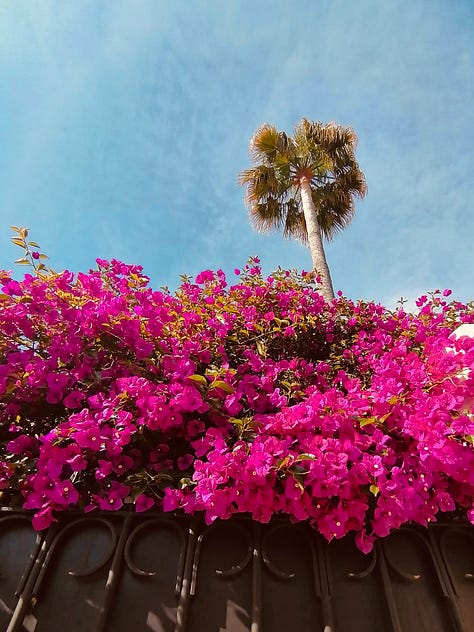
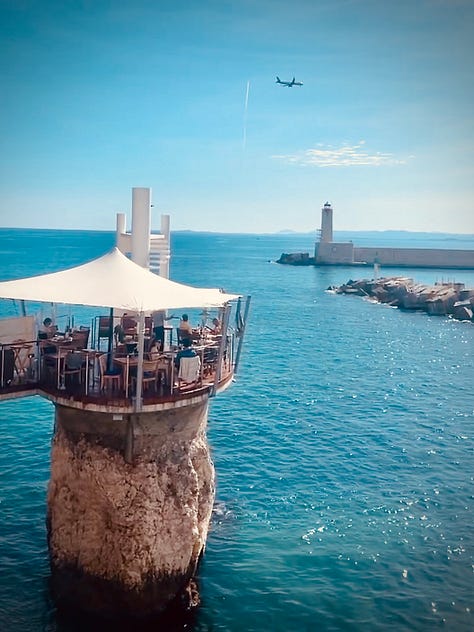
The next night, everything shifted.
My son Harrison wanted to watch the PSG match, so we found a bar showing it. PSG won, and the local supporters poured into the streets, cheering, waving flags, and lighting flares. It was wild, but not violent — a jubilant, chaotic celebration. Car drivers honked in rhythm, people sang. For a while, it was joyful.
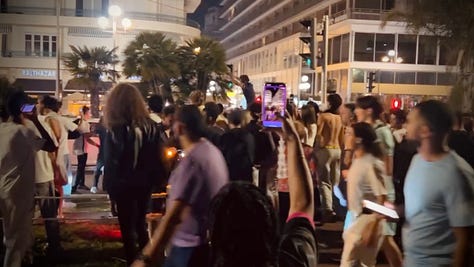
Then the police arrived.
Without warning, they began pepper-spraying the crowd and launching tear gas into the promenade. The celebration turned instantly into a stampede. We saw people knocked from bicycles, families with young children in pushchairs caught in clouds of gas, and peaceful bystanders assaulted by officers.
The police were not containing a threat — they were creating one.
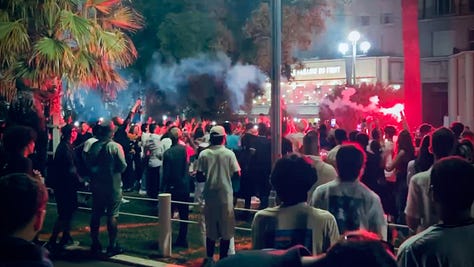
That night, the city didn’t just feel fragile. It felt wounded.
The next morning, my son Harrison — who has Addison’s Disease — went into an adrenal crisis. Whether from the stress of the night before or the general physical strain of travel, his body began to shut down. I had to administer an emergency injection and call an ambulance. We were six hours in the hospital.
It was a hard day — physically, emotionally, cosmically. It reminded me just how thin the line is between celebration and riot, health and emergency, normal and not.
And yet, we were met with kindness. The hospital staff were excellent, and the care was calm and thorough.
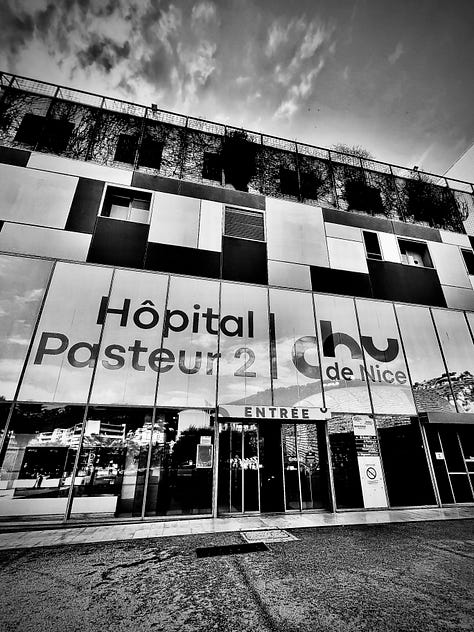
Harrison recovered, and we continued — slower now, and a day late, but still forward.
Later that day, I met a woman outside the locked bookshop I had hoped to visit. I’d hopped on and off numerous trams to get there after my son escaped the hospital, but arrived too late, just as the doors had closed. I started talking with another latecomer. She was interested in climate science, and as we spoke, I realised she was exactly the kind of reader Salt & Seeds was meant for. So I gave her the signed copy I’d intended for the store. It was the right ending to the wrong kind of day.
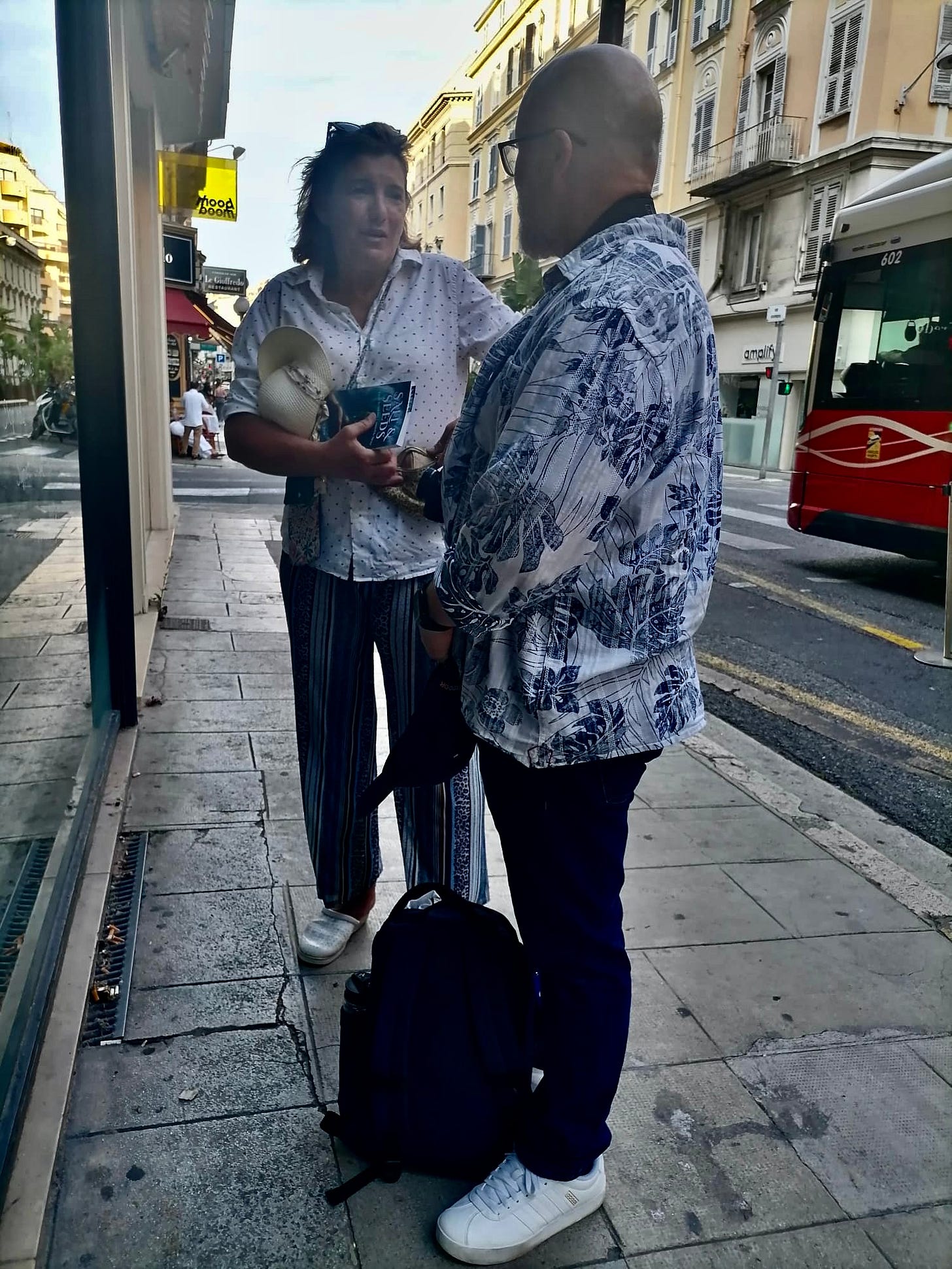
This leg of the journey was a reminder: beauty and danger often travel together. One moment you’re reading messages of peace in beach sand — the next, running through clouds of tear gas.
Provence was a space for ideas — slow ones, deep ones, the kind you don’t even notice forming until they surface weeks later. The ochre cliffs, the warm herbal air, the way light catches on old olive trees — it felt like walking through an oil painting.
Yet Provence is already adapting to climate realities — water scarcity, heat stress, shifting seasons. Rainwater harvesting, community gardening, and drought-tolerant landscapes are not just trends here — they’re necessities.
Nice reminded me of another kind of story — instability, tension, and the pressure points in a system that’s trying to pretend everything is fine. It echoed many of the fractures Salt & Seeds explores: systems under stress, moments of rupture, and the human instinct to reach out, still.
Despite its glamour, Nice faces mounting pressure from coastal storms, rising sea levels, and heatwaves. It’s also grappling with social resilience — how cities protect their people, especially when systems falter. The contrast between the peace protest and the riot, between the sunlit promenade and the tear gas cloud, revealed just how thin our protections can be.
And in that hospital, climate resilience wasn’t theoretical — it was personal. It was a functioning ambulance system, a trained team, a moment of stability when it was needed most. All factors that will be stretched to their limits if we don’t turn this climate crisis around.
But still, there are books. There are people. There is care in conversations with strangers on the street, in emergency rooms, in small gestures that say, we’re not giving up on each other yet.
Leg 5: Monaco To Lake Garda – Border Crossings, Alpine Stillness & New Pages on the Edge of Old Empires

This stretch was about contrasts. Monaco’s gold-gleam fantasy. A midnight apartment so spooky it should come with a health warning. And the coastal switchbacks of the James Bond road to carry us between. Then, finally — Lake Garda. Still water, stone harbours, and the kind of afternoon that makes you forget the sting of mosquitoes and bureaucracy.
The drive into Monaco was a pure spectacle; hairpin bends, cliff views, private yachts like cruise liners. We pulled over at the memorial viewpoint on Boulevard Princesse Grace de Monaco, where the whole coastline glittered in Mediterranean light. A moment of cinematic stillness.
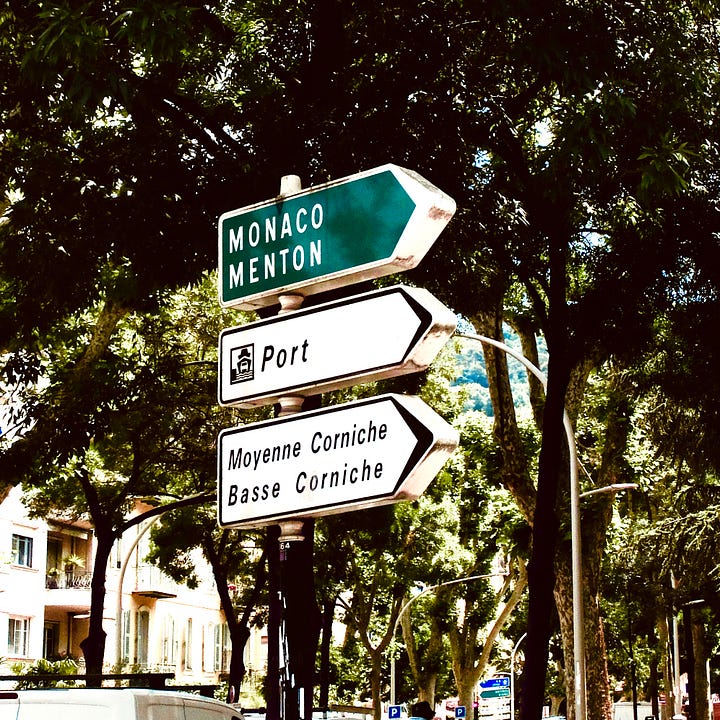
The bookshop I’d been aiming for in Monaco had vanished — still listed as open on Google, but shuttered, gone. I’d walked a mile uphill in 30 °C heat to find it. Luckily, I’d already dropped bookmarks at Alphabet Monaco earlier that day. If I’d known, I would’ve left the book there, too.
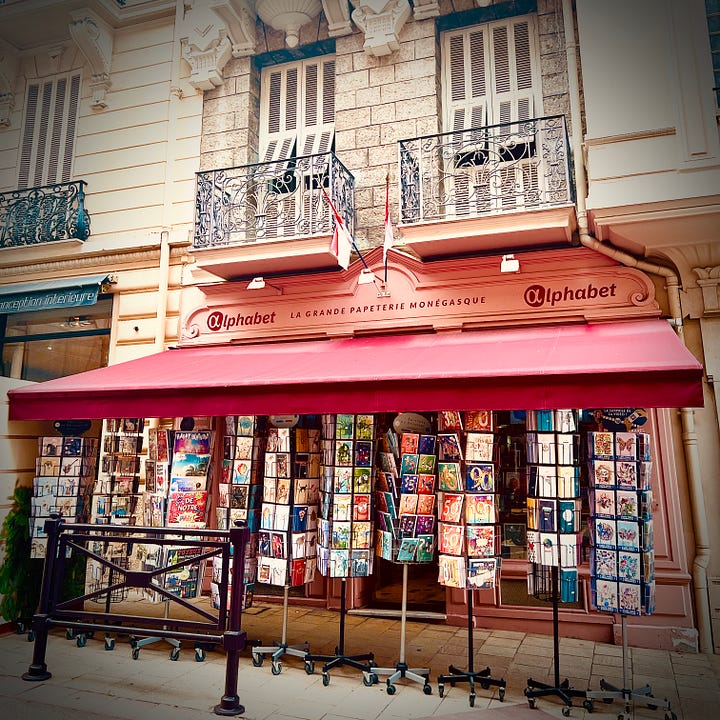
After the book business, we wandered through Monaco’s dreamscape: giant sculptures for sale outside the casino, a place called Buddha Bar that seemed more Kardashian than Zen, lettered designer stores and supercars with more shine than legroom.
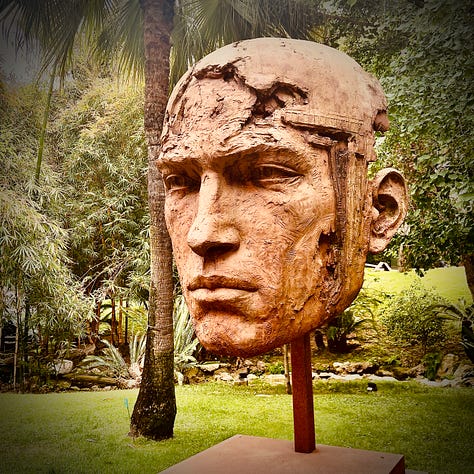
I tried to enter the main casino — just to look around— but was turned away in the lobby. Apparently, now that the UK’s out of the EU, my driver’s licence isn’t valid ID anymore. The staff were openly smug about rejecting me. A small but telling moment. I don’t think my grey-bearded face matched the house style.

But we did find Amore Mio, a little café doing excellent frappes with oat milk and tomato bread at prices far more generous than the casino’s bouncers. Then we just took in the sights as we returned to the car, and I captured a few more shots to share with you.
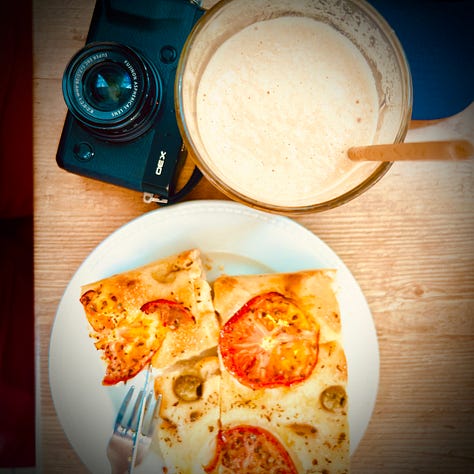
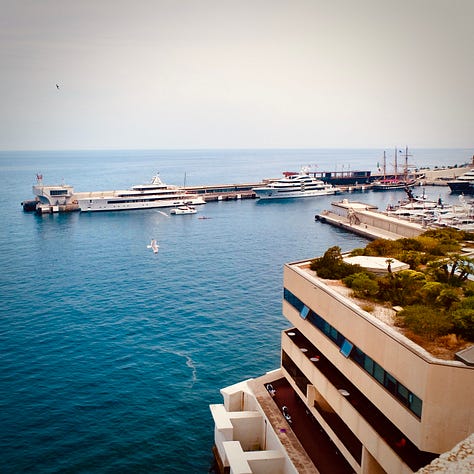
As we passed through San Remo, we realised we wouldn’t reach Lake Garda before nightfall. So we grabbed a last-minute Booking.com apartment near San Lorenzo al Mare. It sounded fine online. But when we arrived, tired and in the dark, things got... weird.
First, we couldn’t find it, so the owner messaged with better directions. They also said no one had been available to clean it since the last guests left, and offered a discount if we did it ourselves. We’re used to backpacker’s hostels and dealing with our own laundry when travelling, so that sounded okay to us.
Harrison went door-to-door with a torch looking for the right entrance. We finally got in near midnight. The reality of the apartment’s condition hit me when we opened the door. Dirty laundry on the beds, piles of dirty, wet towels on the floor, and a very musty aroma.
The “fresh bedding” was supposedly in the basement. The key was “in a drawer.” We found the drawer. Found several keys. Found the basement. None of the keys worked.
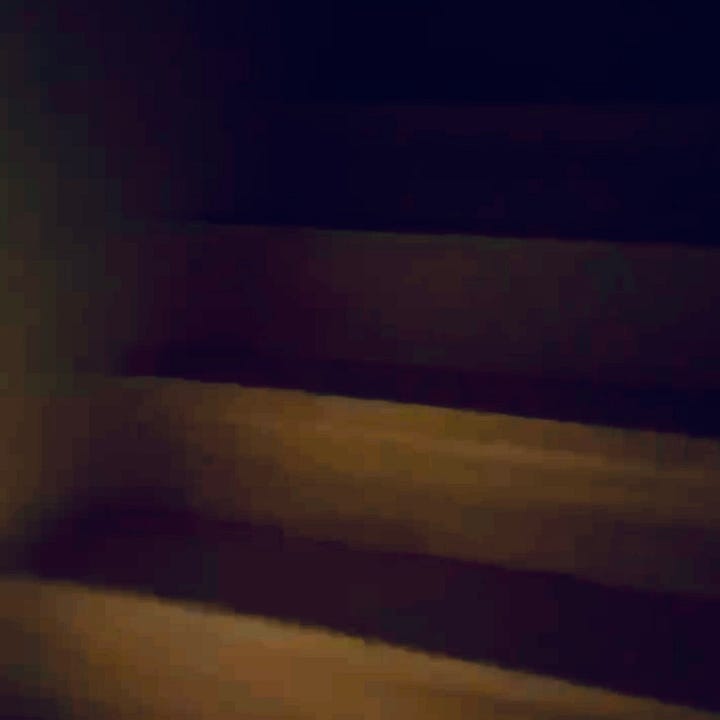
Harrison, torch in hand, explored the stairwell like a ghost-hunter, though no white sheets in sight. That basement was like a scene from a slasher movie. Crawling with spiders at the bottom, naturally balanced by a mosquito rave at the top.
In the apartment, hairy house-centipedes were surfing the damp bathroom tiles. The wiring looked ancient, with string-wrapped 1950s cable ready to burn any moment. The decor was amusingly eccentric, like a time capsule filled by a killer clown.
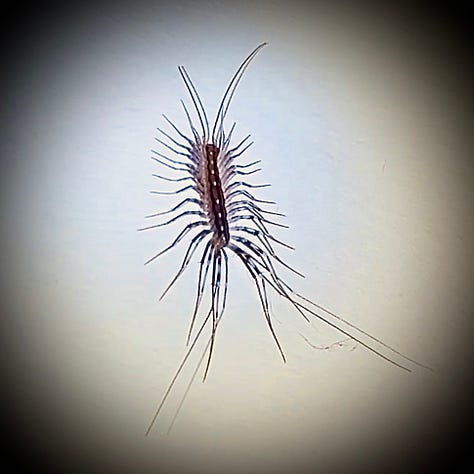
I fetched my emergency bugout bag from the car. Harry got my sleeping bag. Sarah made do with a beach towel. We slept. Kind of.
In the morning, we headed northeast — through scenery that grew gentler, greener, cooler.
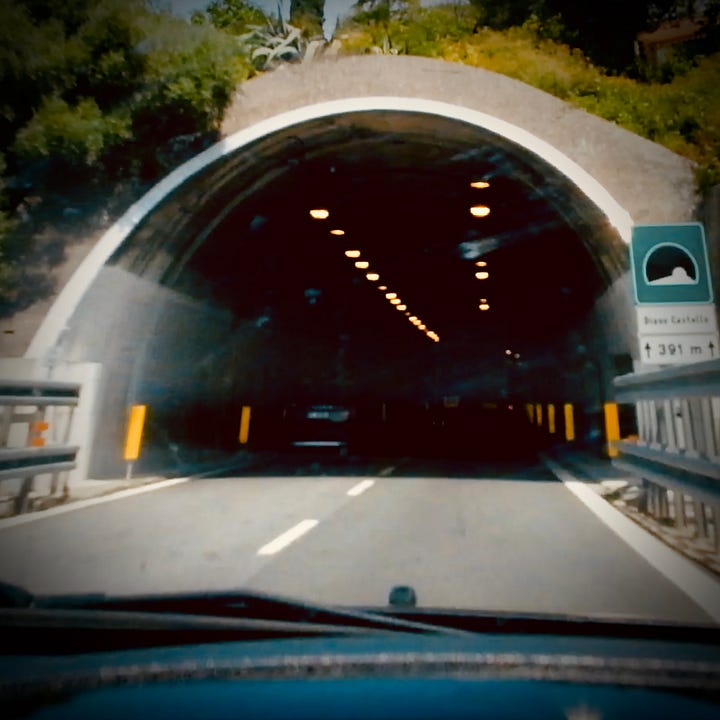
Somewhere along the way we stopped at a roadside fruit stand, and reminded ourselves what freshness looks like. The tomatoes were massive!
Desenzano del Garda was our destination. We walked the marina, and I found Giunti al Punto Librerie, where I left a copy of Salt & Seeds with Martina, the bookseller. She was welcoming, curious, kind, and exactly the kind of person I write for. After one of those rare, genuine conversations that cut through tiredness and doubt, I took her photo holding the book.

Next door, I found Vivaldi Bar Gelato and had the best lemon sorbet I’ve ever tasted — light, vegan-friendly, perfectly zesty.
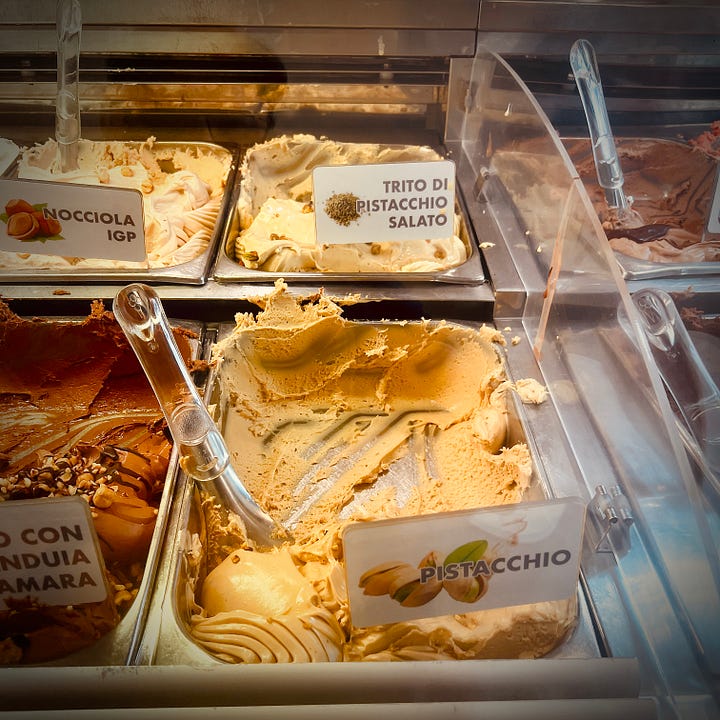
That night, we got lucky. Another last-minute apartment — but this one was sleek, modern, cool, and clean. A blessed reversal.
The next morning in Lazise, we found a quiet café for brunch. Sarah had an early Aperol Spritz. Harrison and I tried local pastries. We stepped into the cool shadow of a beautiful church next door, then began our journey to Venice.
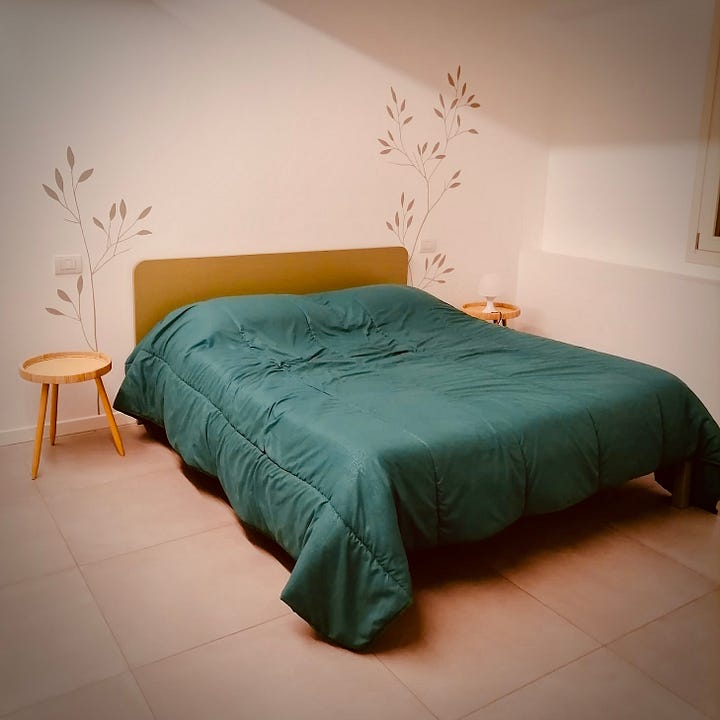
This leg gave me thoughts about edges — of empires, maps, identities. We moved from French order to Italian improvisation. From brittle control and gold-clad handbags to gentle chaos and warmth.
The high views of Monaco felt like a glossy cover. Its resilience is aesthetic, not social. Every detail is designed, but brittle. The rejection at the casino said more about Brexit than border policy. Monaco has just lost its only real bookshop; according to the baker next door, it wasn’t something people wanted there anymore.
Alphabet was more stationery and greeting cards than books, but they did have a small selection of well-curated titles. The best place I found in Monaco was the children’s library, which seemed to cater well to the reading needs of the very young, at least. Monaco reminded me: what some see as wealth is often just a shallow façade, a designer label on a bargain-bin garment, a gilded frame with little to offer inside.
In contrast, the Riviera towns of Italy — with their mosquito mobs and eccentric apartments — may lack polish, but they offered something real. A different kind of resilience: people making do, finding solutions, still offering kindness.
Garda felt like equilibrium, like a rich story well read. Still water, strong light, lots of trees. Signs of a place learning to balance tourism, tradition, and the climate curve ahead, with a welcoming smile.
Travel isn’t just distance covered, it’s contrast absorbed. From designer cities that push you away, to bookshops that welcome you in. From gold statues and locked doors… to torchlit basements and lemon sorbet under a tree.
Borders are more than lines. They’re thresholds, and some of them are a little strange but memorable.

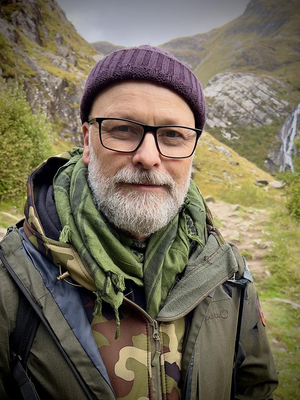

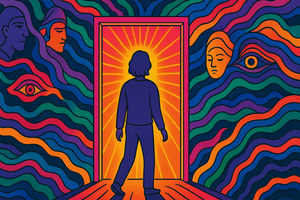

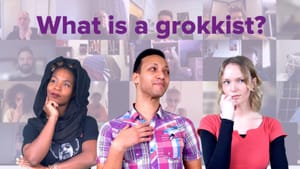
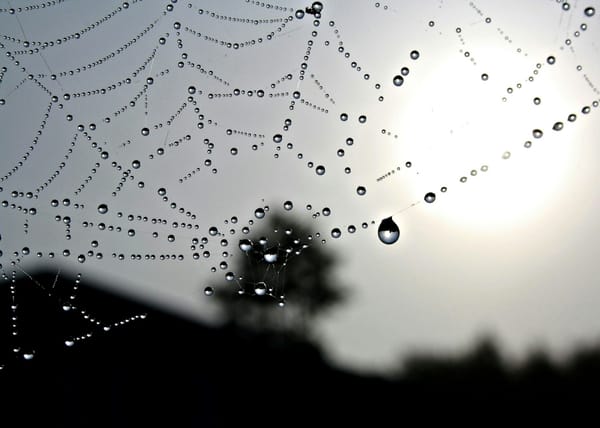


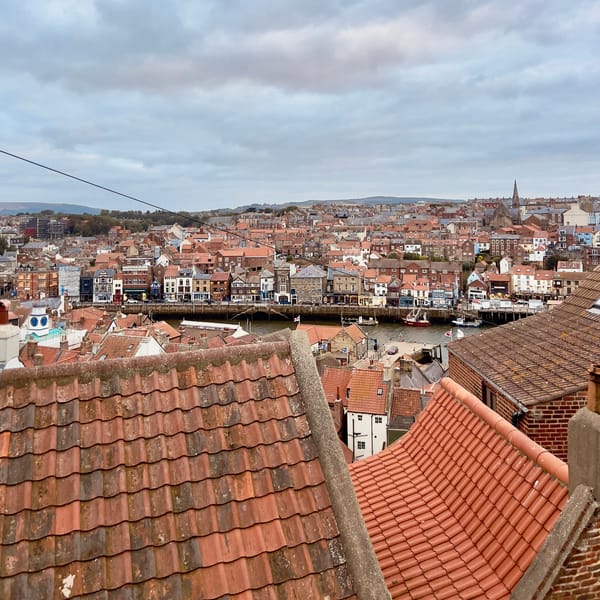
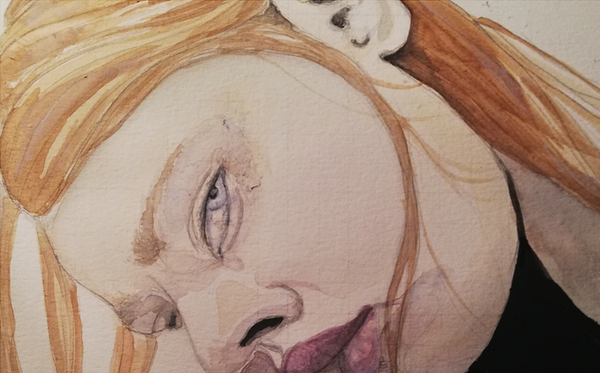
Member discussion